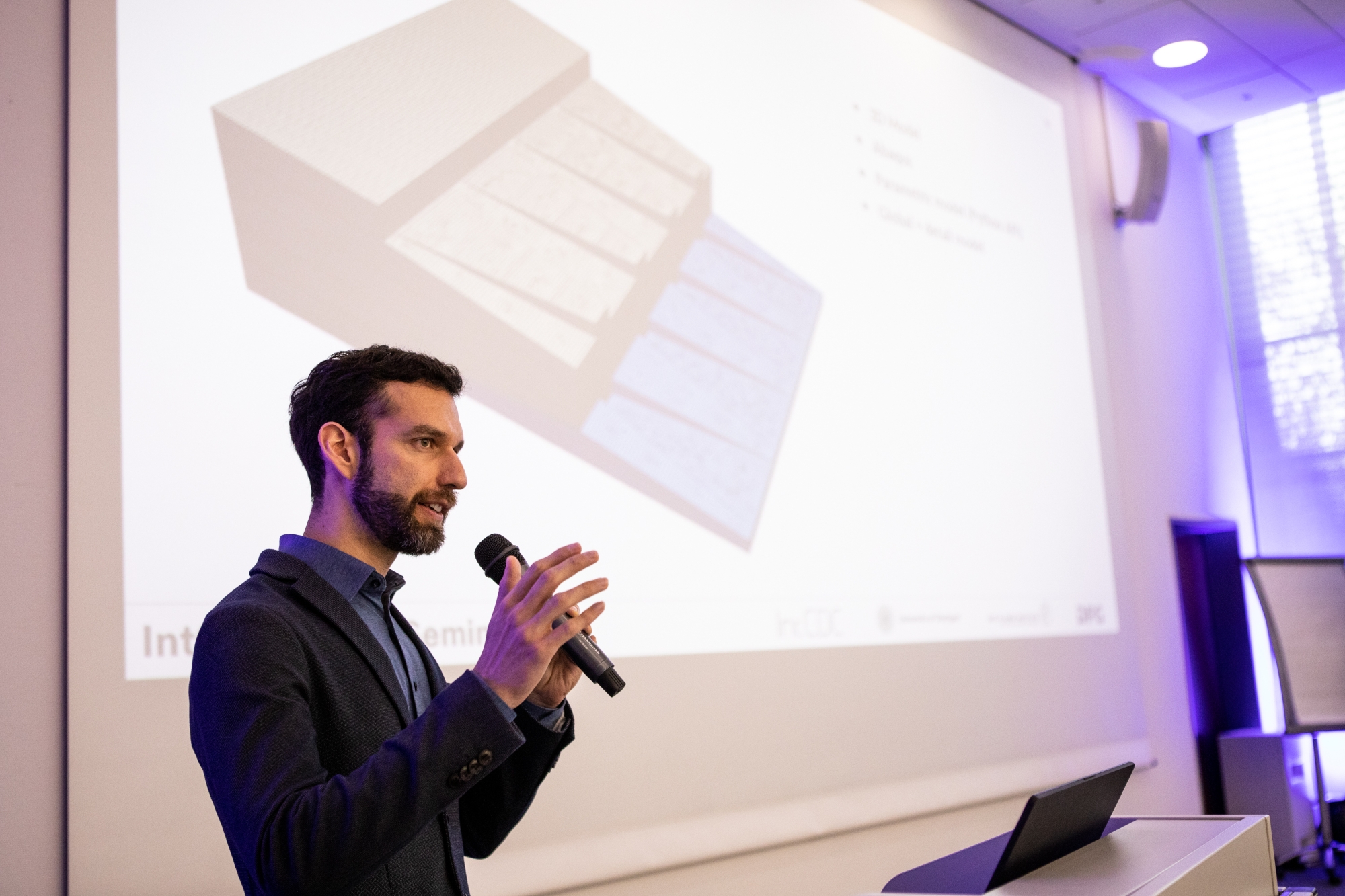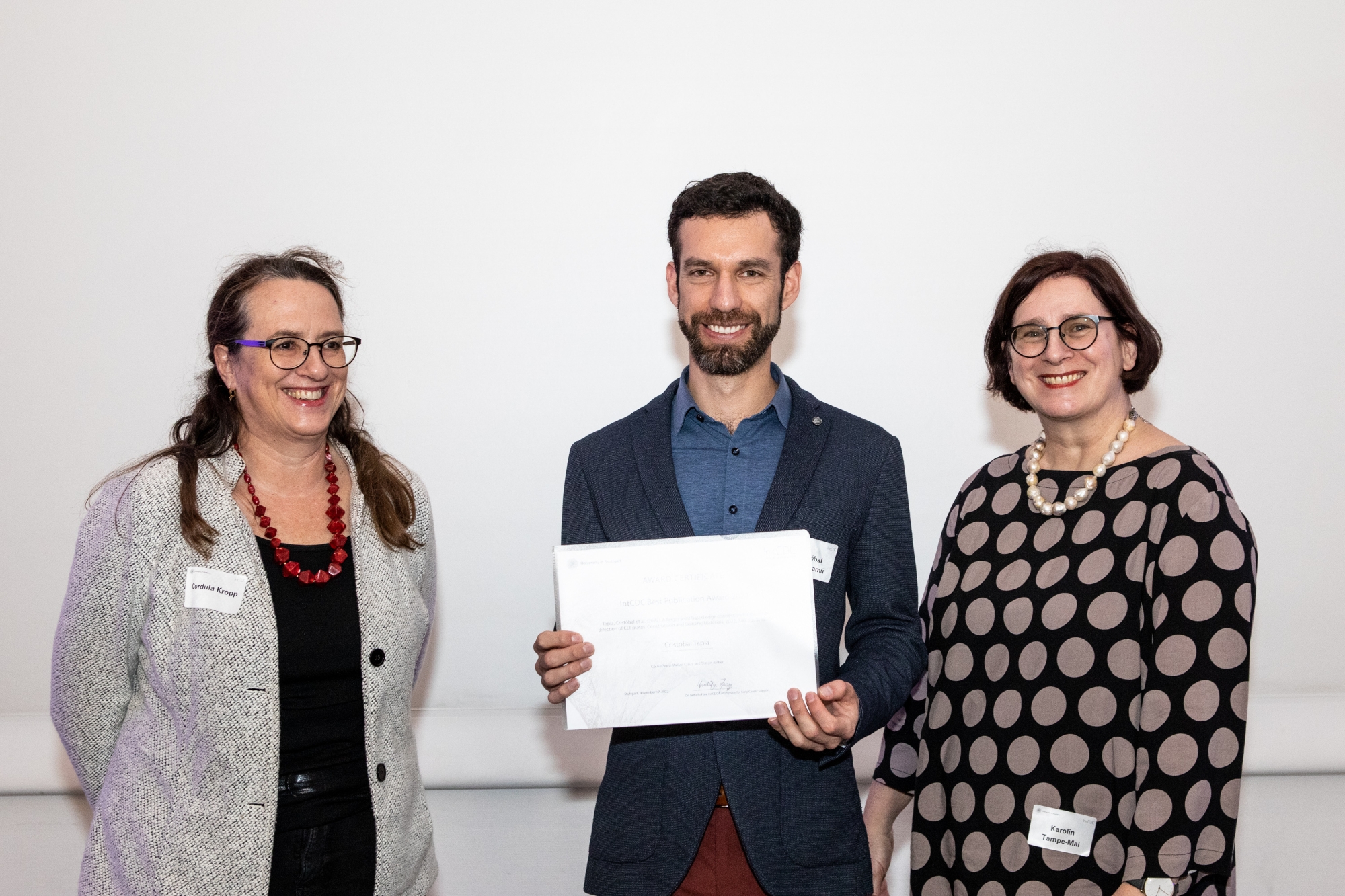We are happy to announce that Cristóbal Tapia (MPA) together with his co-authors Marian Claus (MPA) and Simon Aicher (MPA) received the second IntCDC Best Publication Award 2022 for their paper A finger-joint based edge connection for the weak direction of CLT plates published in Construction and Building Materials, 2022, 340. Jg., S. 127645.
 Cristóbal Tapia presenting at the IntCDC Status Seminar
Cristóbal Tapia presenting at the IntCDC Status Seminar
The award was handed over at this year's IntCDC Status Seminar and aims to honour and support successful early career researchers and their high intrinsic motivation and identification with their academic work.
 Cordula Kropp and Karolin Tampe-Mai together with the IntCDC Best Publication Award Winner Cristóbal Tapia
Cordula Kropp and Karolin Tampe-Mai together with the IntCDC Best Publication Award Winner Cristóbal Tapia
Paper Abstract
A new connection concept for joining cross-laminated timber (CLT) plates in their secondary direction is presented. The connection consists of two laminated veneer lumber (LVL) gusset plates with finger-joint-like profiles milled on one side which are glued onto the outermost layers of the CLT. It is demonstrated that the joint represents a stiff moment resistant connection, enabling the activation of the normally underutilized biaxiality of CLT plates and expanding the design freedom of architects and engineers. The concept was analyzed by means of analytical and finite element (FE) models for two geometry alternatives, differing in either a 2D or 3D tapered finger profile. The 3D tapered finger profile produced a stress reduction of around 5% in the region of stress concentration and a more even shear stress distribution on the bonded surface. Thereafter, four specimens were manufactured – two of each geometry alternative – and then tested in four- and three-point bending setups in order to assess the behavior at pure bending as well as at combined moment and shear loading, respectively. At pure bending, the studied connection delivered bending capacities of 100% of the characteristic value of the unjointed CLT material. For the case of moment and shear loading, the global capacity was determined by a bending failure in the CLT region subjected to maximum moment, while the joints remained unbroken. Measured deformations and strains during the tests validated the FE model, which can be used to further develop the connection concept, which allows for a full activation of the biaxial behavior of large-span CLT floors.
Related Links:
• A finger-joint based edge connection for the weak direction of CLT plates
• IntCDC Grants and Awards


